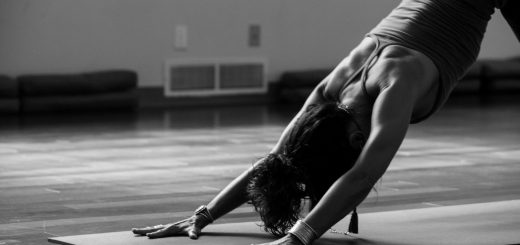Asana: Mind-Body Connection through Postures

Hey there, amazing readers! 🖐️ Just a quick note: yes, we know there are a lot of ads here. Trust us, we get it—it’s not the prettiest look, but they help us keep this blog alive and kicking. Those pesky little ads cover the costs of all the behind-the-scenes magic, from hosting and tech stuff to creating content we hope you’ll love.
We’re committed to delivering quality posts, and your support (even just sticking around despite the ads) means everything to us. So, bear with us, and thanks for helping us keep the good vibes rolling. Now, on to the fun stuff! 😉
TRANSLATE BUTTON AT THE END OF THE ARTICLE
A Quick Overview
Asana, a Sanskrit term meaning "posture" or "pose," is an integral aspect of yoga practice that focuses on the mind-body connection.
Through a series of physical postures, asana aims to cultivate balance, strength, flexibility, and mindfulness.
The practice of asana not only enhances physical well-being but also promotes mental clarity and emotional stability.
By aligning the body and mind through specific postures, practitioners can tap into a deeper sense of self-awareness and inner peace.
In this article, we will delve into the world of asana and explore how it contributes to the holistic well-being of individuals.
Introduction to Asana: Mind-Body Connection
At its core, asana is a form of moving meditation that combines physical movement with breath awareness.
The practice of asana is designed to enhance the mind-body connection by focusing on alignment, balance, and relaxation.
Through the mindful execution of various postures, practitioners can cultivate a sense of presence and mindfulness in each moment.
Asana practice encourages individuals to be fully present in their bodies, allowing them to let go of distractions and worries, and instead, tune into their physical sensations and breath.
Understanding the Benefits of Asana Practice
The benefits of regular asana practice are wide-ranging and impactful.
Physically, asana helps improve strength, flexibility, and balance.
It also promotes better posture and alignment, reducing the risk of injuries and chronic pain.
Mentally, asana practice can enhance focus, concentration, and stress management.
Emotionally, asana allows individuals to release tension and cultivate a sense of calm and well-being.
The holistic nature of asana practice makes it a powerful tool for promoting overall health and vitality.
Importance of Proper Posture in Asana
Proper posture is crucial in asana practice as it ensures that the body is aligned correctly to maximize the benefits of each pose.
Good posture helps prevent strain on muscles and joints, reduces the risk of injury, and allows for better breath control.
By maintaining proper alignment in each posture, practitioners can experience greater ease and efficiency in their movements.
Proper posture also helps cultivate a sense of mindfulness and presence in the practice, enabling individuals to deepen their mind-body connection.
Exploring Different Asanas and Their Effects
There is a wide variety of asanas, each with its own unique benefits and effects on the body and mind.
Some asanas focus on building strength and stability, while others emphasize flexibility and mobility.
Certain postures are energizing and invigorating, while others are calming and restorative.
By exploring different asanas, practitioners can tailor their practice to meet their specific needs and goals.
Whether you’re looking to build strength, increase flexibility, or cultivate a sense of peace, there is an asana for every intention.
Techniques to Improve Mind-Body Awareness
To enhance mind-body awareness in asana practice, it is essential to cultivate a sense of presence and mindfulness throughout each posture.
One effective technique is to focus on the breath and synchronize it with movement.
By paying attention to the inhales and exhales, practitioners can stay centered and grounded in the present moment.
Another helpful technique is to observe physical sensations in the body without judgment.
By tuning into these sensations, individuals can deepen their awareness of how each posture impacts their body and mind.
Incorporating Breathwork in Asana Practice
Breathwork plays a vital role in asana practice as it helps regulate the nervous system, promote relaxation, and enhance mindfulness.
By coordinating breath with movement, practitioners can create a flowing and meditative practice that fosters a deeper mind-body connection.
Deep breathing techniques, such as diaphragmatic breathing and ujjayi breath, can help individuals stay calm and focused during challenging poses.
By incorporating breathwork into their practice, practitioners can harness the power of the breath to enhance their overall well-being.
How Asanas Help in Stress Reduction
Asanas are powerful tools for stress reduction as they promote relaxation, release tension, and calm the mind.
Through the practice of gentle and restorative postures, individuals can activate the body’s relaxation response, reducing the impact of stress on the nervous system.
Certain asanas, such as forward folds, twists, and inversions, are particularly effective in relieving stress and anxiety.
By incorporating stress-reducing asanas into their practice, individuals can cultivate a sense of peace and resilience in the face of life’s challenges.
Asana Sequencing for a Balanced Practice
Effective asana sequencing is essential for creating a balanced practice that targets different areas of the body and promotes overall well-being.
A well-rounded sequence should include a mix of standing, seated, balancing, and inverted postures to engage all muscle groups and joints.
By starting with gentle warm-up poses and gradually progressing to more challenging postures, practitioners can prepare their bodies and minds for deeper exploration.
Proper sequencing also allows for a smooth transition between poses, promoting flow and continuity in the practice.
Overcoming Challenges in Asana Practice
Asana practice can present various challenges, such as physical limitations, mental resistance, or lack of motivation.
To overcome these challenges, it is essential to approach the practice with patience, self-compassion, and an open mind.
Listening to the body’s cues, modifying poses as needed, and seeking guidance from a qualified instructor can help individuals navigate obstacles in their practice.
By cultivating a positive and non-judgmental attitude towards challenges, practitioners can develop resilience and perseverance on their yoga journey.
Achieving Mindfulness through Asana
Mindfulness is a key component of asana practice, as it encourages individuals to be fully present and aware in each moment.
By focusing on the breath, physical sensations, and alignment in each posture, practitioners can cultivate a deep sense of mindfulness and self-awareness.
Mindful movement in asana practice promotes a state of flow where the mind is fully engaged in the present experience.
Through consistent practice, individuals can develop a greater capacity for mindfulness both on and off the mat, leading to a more balanced and harmonious way of being.
Asana for Physical and Mental Well-being
The holistic benefits of asana extend beyond physical fitness to encompass mental and emotional well-being.
Regular practice of asanas can help reduce symptoms of anxiety, depression, and stress by promoting relaxation and emotional regulation.
Asanas also stimulate the release of endorphins, the body’s natural feel-good hormones, which can boost mood and enhance overall mental health.
By incorporating asana practice into their daily routine, individuals can experience a profound sense of well-being that permeates every aspect of their lives.
Conclusion: Embracing the Mind-Body Connection
In conclusion, the practice of asana offers a powerful pathway to cultivate the mind-body connection and enhance overall well-being.
By engaging in mindful movement, breathwork, and self-awareness, individuals can tap into their inner resources for healing and transformation.
Asana practice not only improves physical fitness and flexibility but also nurtures mental clarity, emotional resilience, and spiritual growth.
By embracing the mind-body connection through asana, individuals can experience a profound sense of harmony, balance, and vitality in their lives.
Start your journey towards holistic well-being today by incorporating asana practice into your daily routine.

The Enlightenment Journey is a remarkable collection of writings authored by a distinguished group of experts in the fields of spirituality, new age, and esoteric knowledge.
This anthology features a diverse assembly of well-experienced authors who bring their profound insights and credible perspectives to the forefront.
Each contributor possesses a wealth of knowledge and wisdom, making them authorities in their respective domains.
Together, they offer readers a transformative journey into the realms of spiritual growth, self-discovery, and esoteric enlightenment.
The Enlightenment Journey is a testament to the collective expertise of these luminaries, providing readers with a rich tapestry of ideas and information to illuminate their spiritual path.
Our Diverse Expertise 🌟
While our primary focus is on spirituality and esotericism, we are equally passionate about exploring a wide range of other topics and niches 🌍📚. Our experienced team is dedicated to delivering high-quality, informative content across various subjects ✨.
To ensure we provide the most accurate and valuable insights, we collaborate with trusted experts in their respective domains 🧑🏫👩🏫. This allows us to offer well-rounded perspectives and knowledge to our readers.
Our blog originally focused on spirituality and metaphysics, but we’ve since expanded to cover a wide range of niches. Don’t worry—we continue to publish a lot of articles on spirituality! Frequently visit our blog to explore our diverse content and stay tuned for more insightful reads.






